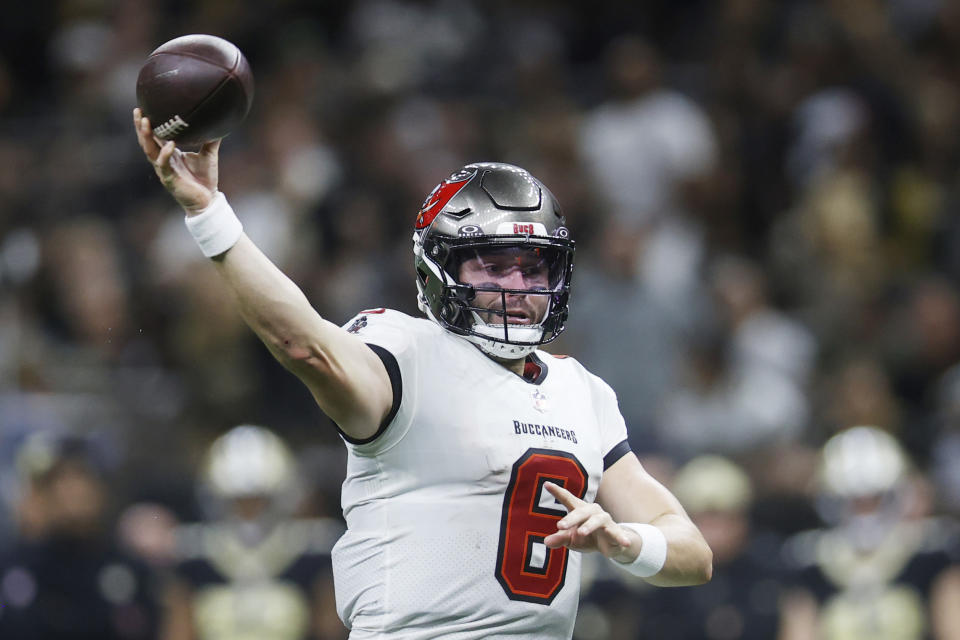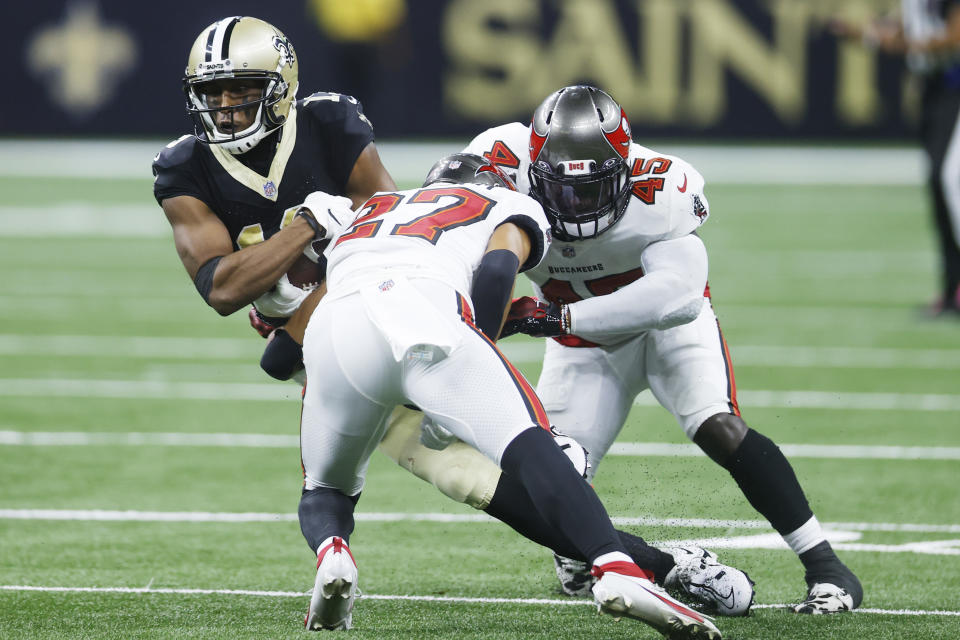Bucs’ biggest surprises from the first quarter of the season

Outside of Tampa Bay, expectations for the Buccaneers coming into the 2023 season were low. With no Tom Brady and $75 million in dead cap money, the Bucs were dead on arrival.
Tampa Bay clearly had other ideas.
At 3-1, Tampa Bay is firmly in control of the NFC South and a playoff contender. It comes as little surprise that the defense is above average, powered largely by 10 forced turnovers, the second-most in the NFL this year. The source of these turnovers and the defense’s resiliency, on the other hand, may be unexpected.
The biggest surprises come on offense. Things were going to be different under new offensive coordinator Dave Canales, but as a rookie playcaller, it was a mystery whether he would be a change for good or not. A quarter of the way through the season, it would be difficult to argue that Canales is not an upgrade for the Bucs offense.
Here are the biggest surprises from the first four games of Tampa Bay’s season:
Baker Mayfield

No move represented the Bucs’ 2023 underdog status than the signing of Baker Mayfield. The former first-overall pick was unceremoniously bounced from Cleveland and bounced across the NFL last year before signing a $4 million prove-it deal in Tampa Bay.
To the surprise of everyone outside of Tampa Bay, the union is paying dividends for Mayfield and the Bucs. While he isn’t a stat-generating juggernaut, Mayfield has been efficient and effective, particularly on third down where he is averaging 0.5 EPA per play, second-best in the NFL.
The biggest surprise is that Mayfield has largely avoided sacks (4) and turnovers (2) in his first four games. His tendency to put the ball in harm’s way and take sacks was a significant driver for his downfall in Cleveland. In Tampa Bay, he is on track to reduce turnovers and sacks by half his previous career rates.
No one will mistake Mayfield for Tom Brady, but he doesn’t have to be Brady. His style of play keeps the offense functional and largely a step ahead of the competition. The only question that remains is whether he can sustain this level of play for the rest of the season.
Luke Goedeke

Last year, the Bucs’ worst offensive lineman was without a doubt rookie guard Luke Goedeke. Who would have thought that all he needed was to move to a more valuable position to become a viable piece of the offensive line?
The Bucs drafted Goedeke in the second round of the 2022 draft to begin rebuilding their offensive line following the retirement of Pro Bowl guard Ali Marpet and the departure of Alex Cappa. However, in the eight games he started at left guard, he was completely overmatched in both pass protection and run blocking, earning a dismal 46.7 grade from Pro Football Focus on the season. Just one year into his career, Goedeke looked like a bust.
Coming into 2023, the Bucs had few options to upgrade the offense line and decided to move All-Pro tackle Tristan Wirfs to left tackle. This appears to be the best thing that could have happened to Goedeke, who slid into the vacated right tackle spot, which is where he played in college at Central Michigan. This year, he has been the Bucs’ best lineman behind Wirfs and looks much improved in both the pass and run games, reflected by his 70 grade from PFF.
Secondary depth

While Tampa Bay’s starting defense looks mostly like it did last year, their cap woes had a major impact on their depth, particularly in the secondary. After a strong run drafting defensive backs from 2018 to 2020, the Bucs entered 2023 with little experience in the secondary behind their starters.
Secondary depth is now looking like a strength thanks to the development of previous draft picks like Zyon McCollum, unheralded veterans like Dee Delaney and undrafted rookie Christian Izien. In fact, Tampa Bay’s backup defensive backs, namely Delaney and Izien, account for four of the defense’s ten turnovers this season.
The emergence of the secondary depth came at just the right time as both starting cornerbacks, Carlton Davis and Jamel Dean, have already missed a combined three games this season. Their continued growth should help the Bucs’ defense maintain its high level of play and keep the team competitive while the offense is cultivating a new identity.
Wide receivers not named Mike Evans or Chris Godwin

It’s no secret that the Bucs have one of the best wide receiver tandems in the NFL with Mike Evans and Chris Godwin. However, coming into this season, depth was a major question as there was virtually no experience behind them on the depth chart.
Through four games, Tampa Bay’s young receivers have answered that question with a healthy dose of confidence. Second-year receiver Deven Thompkins and rookies Trey Palmer and Rakim Jarrett have provided Baker Mayfield and the offense with reliability and playmaking. When Mike Evans went down in New Orleans, Thompkins and Palmer stepped up with a combined 51 yards and a touchdown apiece.
Even with the uncertainty of Mike Evans’ contract situation looming, the Bucs are proving that they are well prepared for the future of their pass offense, with or without Evans.

